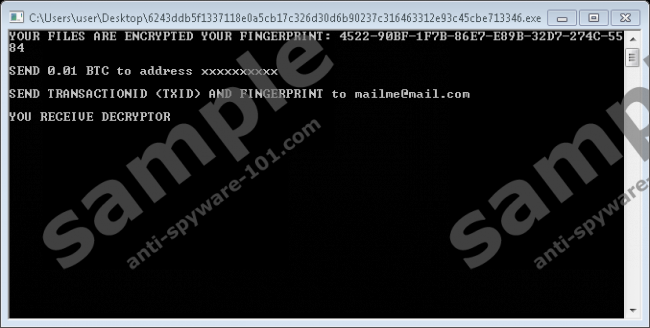What is Littlefinger Ransomware?
Ransomware programs are incredibly prevalent nowadays. Thus, being aware of their existence and keeping your PC secure is critical. One such application that roams the web currently, goes by the name of Littlefinger Ransomware. If you ever encounter it while browsing the Internet, be sure to do everything in your power to refrain from it at all times. Doing so is critical because this ransomware program is notorious for its ability to encrypt massive quantities of data without any notification or authorization. As you can imagine, having an application capable of such inner workings can have disastrous outcomes, to put it lightly. Learn more about its intrusive functionality by reading the rest of our detailed report. Besides such information, we include virtual security recommendations that will allow you to maintain a clean and safe system at all times. Lastly, we present a detailed removal guide, which you should use to delete Littlefinger Ransomware without encountering any major problems.
What does Littlefinger Ransomware do?
Littlefinger Ransomware starts doing its dirty work at the very same instance that it gains access to your operating system. Right upon intrusion, it is set to identify the contents of your hard drive. That is done so the malware in question would determine which files it will attack. The next step in the chain of action is the encryption procedure, which is over before you know it; also, this process is completely silent. Usually, this malware blindsides most users since it acts silently. During encryption, it locks your files with a robust cipher. Such a powerful algorithm is used for a simple reason - to eliminate any chances of manual decryption. During encryption, this ransomware locks file types such as .docx, .jpg, .png, .rar, .pdf, .gif, .doc, .pptx, .mp3, mp4, .xls, and quite a few others. Because of such functionality, quite a few of your programs will stop working once and for all since files that are necessary for their inner workings will not be accessible. To regain access to your data, you are asked to pay a ransom in return for decryption services. Avoid doing so because it is likely a scam since malware developers are not bound legally to provide decryption services even if you pay up. Try using your shadow copies or backups of your hard drive to restore the affected data. Also, it should go without saying that you must delete Littlefinger Ransomware at the very same instance that it is found up and running on your PC. Do so in just a few simple steps by following your detailed removal guide.
How to improve your virtual security
To have a secure operating system at all times, you must take a few precautionary steps. Our research team highly advises you to make scheduled backups of your hard drive. Doing so is critical because those backups could come in handy if you ever need to restore data affected by a ransomware application. Also, you should practice safe browsing habits at all times. This means that you should bypass all unauthorized download sites because they are full of bundled installers, which are notorious for being filled with questionable and even malicious programs. Furthermore, you need to stay away from all email attachments that are sent to you by questionable third-parties. We recommend doing so because malware developers often use spam email campaigns for distribution purposes. In addition to all of that, you should install a professional antimalware tool if you do not have one already. Such a tool is a crucial part of your overall virtual security because it is designed to identify and remove any suspicious program before it can make its way on to your operating system.
How to remove Littlefinger Ransomware
The removal of Littlefinger Ransomware should be your utmost priority if it is ever discovered up and running on your computer. Follow the removal guide with care, and once you are done, we highly advise you to double-check your operating system at all times. Doing so is vital because traces of Littlefinger Ransomware might act deviously, to put it lightly. For example, just a few leftovers could be enough for this malware to continue doing its dirty work. In other situations, those traces could be employed to restore Littlefinger Ransomware without your knowledge. Another way to be sure that the termination procedure has been successful is by scanning your PC with a reliable antimalware tool because it can identify and remove anything associated with this malicious application automatically.
How to remove Littlefinger Ransomware from your PC
- Open the File Explorer.
- Go to C:\Users\<your username>\Downloads.
- Right-click a malicious .exe file and then select Delete. Note that the name of this file is random.
- Close the File Explorer.
- Right-click your Recycle Bin and select Empty Recycle Bin.
100% FREE spyware scan and
tested removal of Littlefinger Ransomware*





0 Comments.